Bilateral Glaucoma Suspect: Understanding the Diagnosis and Management
What is a glaucoma suspect. How is a glaucoma suspect diagnosed. What are the risk factors for glaucoma. What treatment options are available for glaucoma suspects. How often should a glaucoma suspect be monitored. What tests are performed to assess glaucoma progression. How does a doctor decide whether to treat or observe a glaucoma suspect.
Defining a Glaucoma Suspect: Walking the Line Between Risk and Diagnosis
A glaucoma suspect is an individual who exhibits one or more factors that increase their risk of developing glaucoma but does not yet show definitive signs of glaucoma damage. This classification serves as an important early warning system in the field of ophthalmology, allowing for closer monitoring and potential intervention before irreversible damage occurs.
The term “glaucoma suspect” is sometimes referred to as pre-glaucoma or borderline glaucoma. It’s crucial to understand that being a glaucoma suspect does not necessarily mean you will develop glaucoma, but rather that you have an increased risk and require careful monitoring.
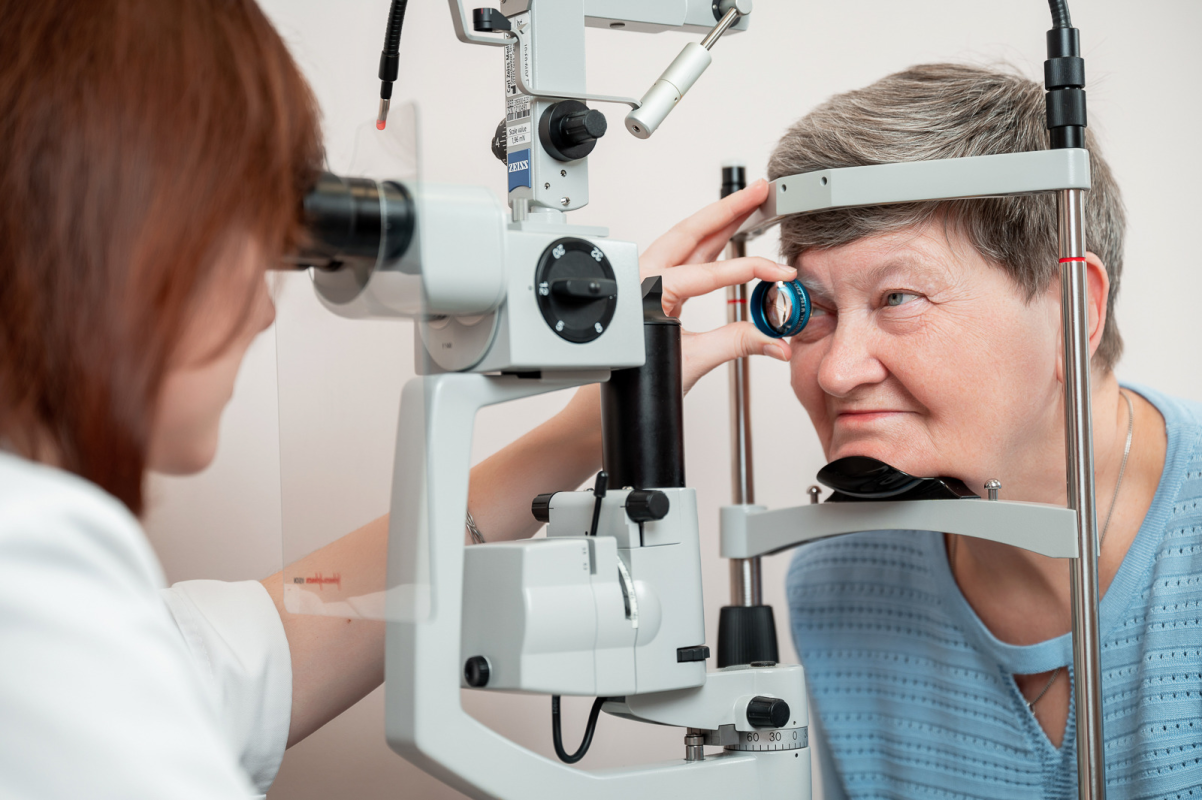
Key Characteristics of a Glaucoma Suspect
- Elevated intraocular pressure (IOP) or ocular hypertension
- Unusual or defective visual fields
- Optic nerve features suggestive of glaucoma
Is being a glaucoma suspect cause for immediate alarm? While it’s not an immediate cause for panic, it does warrant attention and regular follow-ups with an eye care professional. The diagnosis of glaucoma is often made over time, as most forms of glaucoma progress slowly.
The Comprehensive Eye Exam: Uncovering Glaucoma Risk Factors
To determine whether a patient is a glaucoma suspect, a thorough eye examination is essential. This comprehensive evaluation includes several key components:
- Visual acuity assessment
- Pupil evaluation
- Intraocular pressure measurement
- Corneal thickness measurement
- Examination of the front and back of the eye
- Gonioscopy (examination of the eye’s drainage angle)
- Baseline visual field testing
- Optic nerve imaging
Why is gonioscopy important in the evaluation of a glaucoma suspect? Gonioscopy allows the ophthalmologist to examine the drainage angle of the eye, which is crucial in determining whether the patient has open-angle glaucoma (the most common form) or angle-closure glaucoma. This distinction is vital for proper management and treatment planning.
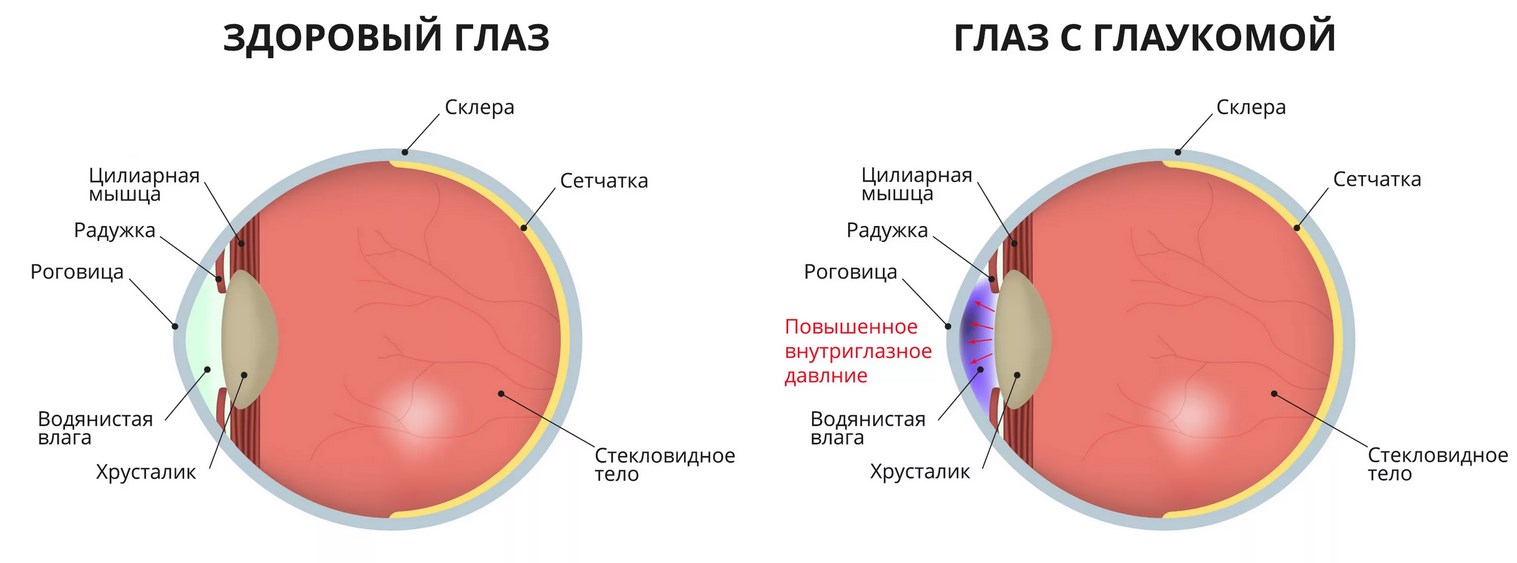
Risk Factors for Glaucoma: Identifying the Red Flags
Understanding the risk factors for glaucoma is crucial in identifying glaucoma suspects and managing their care effectively. While having one or more risk factors doesn’t guarantee the development of glaucoma, it does increase the likelihood and necessitates closer monitoring.
Common Risk Factors for Open-Angle Glaucoma
- Advanced age
- Elevated intraocular pressure
- African-American or Hispanic ethnicity
- Family history of glaucoma
- Corticosteroid use, especially eye drops
- Certain eye conditions (e.g., myopia or thin cornea)
How does ethnicity impact glaucoma risk? Studies have shown that individuals of African-American or Hispanic descent are at a higher risk of developing glaucoma compared to other ethnic groups. This increased risk is thought to be due to a combination of genetic and environmental factors, highlighting the importance of regular eye exams for these populations.
Treatment Options for Glaucoma Suspects: To Treat or Not to Treat?
The management of glaucoma suspects often involves a delicate balance between early intervention and unnecessary treatment. The primary goal is to prevent the progression to full-blown glaucoma while avoiding overtreatment of individuals who may never develop the disease.

The Importance of Follow-Up Care
For glaucoma suspects, the most crucial “treatment” is consistent and thorough follow-up care. Regular monitoring allows eye doctors to detect any changes or progression that might indicate the development of glaucoma.
How often should a glaucoma suspect be monitored? Typically, a low-risk glaucoma suspect may require follow-up visits every 6 to 12 months. However, the frequency of these visits can vary based on individual risk factors and the ophthalmologist’s assessment.
Components of Follow-Up Visits
- Vision check
- Intraocular pressure measurement
- Examination of the front and back of the eye
- Careful assessment of optic nerve appearance
- Structural tests (e.g., optic nerve imaging and photography)
- Functional tests (e.g., automated visual field testing)
Why are repeated tests necessary for glaucoma suspects? Regular testing allows ophthalmologists to detect subtle changes over time that might indicate progression towards glaucoma. These changes may not be apparent in a single examination but become evident when compared to baseline measurements over several visits.
![]()
Treatment Initiation: Weighing the Options
When considering treatment for a glaucoma suspect, ophthalmologists typically have two initial options:
- Topical eye drops
- Laser treatment of the drainage angle
Both of these treatments aim to lower intraocular pressure by either reducing fluid production or increasing drainage from the eye.
How does an ophthalmologist decide whether to treat or continue observation? This decision is often complex and involves considering multiple factors:
- The patient’s individual risk factors
- Examination findings
- The patient’s preferences and concerns
- The potential benefits and risks of treatment
Some patients may prefer a “watch and wait” approach, while others may opt for early treatment for peace of mind. The decision should be a collaborative one between the patient and the ophthalmologist, taking into account all relevant factors.
The Role of Technology in Glaucoma Suspect Management
Advancements in medical technology have significantly improved our ability to detect and monitor glaucoma progression in suspects. These tools provide valuable data that complement clinical examinations and aid in decision-making.

Key Technological Tools in Glaucoma Management
- Optical Coherence Tomography (OCT)
- Visual Field Testing
- Confocal Scanning Laser Ophthalmoscopy
- Corneal Pachymetry
How does Optical Coherence Tomography (OCT) aid in glaucoma suspect management? OCT provides high-resolution, cross-sectional images of the retina and optic nerve, allowing for precise measurement of the retinal nerve fiber layer thickness. This technology can detect subtle changes in optic nerve structure that may indicate early glaucoma progression, even before functional vision loss occurs.
The Psychological Impact of Being a Glaucoma Suspect
Being labeled a glaucoma suspect can have significant psychological implications for patients. While it’s important to take the diagnosis seriously, it’s equally crucial to manage anxiety and maintain a balanced perspective.
Coping Strategies for Glaucoma Suspects
- Education: Understanding the condition and its management can reduce anxiety
- Open communication with your eye care provider
- Adherence to follow-up schedules and recommended lifestyle modifications
- Seeking support from family, friends, or support groups
How can patients manage anxiety related to being a glaucoma suspect? Open communication with your eye care provider is key. Discuss your concerns, ask questions, and ensure you understand your condition and management plan. Knowledge can be empowering and help alleviate fear of the unknown.

Lifestyle Modifications for Glaucoma Suspects
While being a glaucoma suspect doesn’t necessarily require dramatic lifestyle changes, certain modifications may help maintain eye health and potentially reduce the risk of progression to glaucoma.
Recommended Lifestyle Adjustments
- Regular exercise
- Maintaining a healthy diet rich in antioxidants
- Avoiding smoking
- Protecting eyes from UV radiation
- Managing systemic health conditions (e.g., hypertension, diabetes)
- Limiting caffeine intake
Can lifestyle changes prevent glaucoma in suspects? While there’s no guaranteed way to prevent glaucoma, these lifestyle modifications may help maintain overall eye health and potentially reduce risk. However, they should complement, not replace, regular eye exams and adherence to your eye care provider’s recommendations.
The Future of Glaucoma Suspect Management: Emerging Technologies and Approaches
The field of ophthalmology is constantly evolving, with new technologies and approaches emerging to improve the management of glaucoma suspects. These advancements aim to enhance early detection, improve monitoring accuracy, and provide more personalized treatment strategies.

Promising Developments in Glaucoma Management
- Artificial Intelligence (AI) in image analysis
- Home-based IOP monitoring devices
- Genetic testing for glaucoma risk assessment
- Neuroprotective therapies
- Sustained-release drug delivery systems
How might AI change the landscape of glaucoma suspect management? AI algorithms have shown promise in analyzing ophthalmic images, potentially detecting subtle changes indicative of early glaucoma that might be missed by human observers. This could lead to earlier, more accurate identification of at-risk individuals and more timely intervention when necessary.
The management of glaucoma suspects represents a critical juncture in ophthalmic care, balancing the need for vigilance against unnecessary treatment. As our understanding of glaucoma pathophysiology deepens and diagnostic technologies advance, we can expect more refined and personalized approaches to managing these at-risk individuals. The key remains regular follow-up, open communication between patients and eye care providers, and a commitment to eye health that extends beyond the ophthalmologist’s office.

What is a Glaucoma “Suspect”?
Yvonne Ou, MD
University of California, San Francisco, UCSF Medical Center
- Expert Advice
Published on:
A glaucoma “suspect” usually comes to the attention of an eye doctor for several reasons: the eye pressure is found to be elevated above “normal,” there is a strong family history of glaucoma, or the optic nerves have an appearance that is suspicious. It is also possible for a patient to be called a glaucoma suspect due to the presence of several risk factors. However, a definitive diagnosis of glaucoma is often made over time, since most forms of glaucoma are slowly progressing.
GLAUCOMA “SUSPECT”
A glaucoma “suspect” is an individual who demonstrates one or more factors that put them at higher risk of a glaucoma diagnosis, but do not yet have glaucoma damage. Sometimes this is referred to as pre-glaucoma or borderline glaucoma.
Sometimes this is referred to as pre-glaucoma or borderline glaucoma.
Characteristics of a glaucoma “suspect” include:
- High intraocular pressure (IOP) or ocular hypertension
- Unusual or defective visual fields
- Other optic nerve features suggestive of glaucoma
Once a baseline status is determined, periodic follow-up visits with the eye doctor are necessary to see if there are changes to the appearance of the optic nerve, the visual field, or to the internal eye pressure, for example. For the purposes of this article, the topic is limited to the “open-angle” glaucoma “suspect.” In open-angle glaucoma, which is the most common form of glaucoma, the drainage angle has a typical open appearance. Another form of glaucoma, angle-closure glaucoma, is a separate entity and will not be discussed here.
The Eye Exam
To determine whether a patient is a glaucoma suspect, a full history and eye examination should be performed. The doctor will evaluate vision, the pupils, eye pressure, corneal thickness, and examine the front and back of the eye. There is also an examination of the drainage “angle” or drainage system of the eye by using a special lens with mirrors, and is called gonioscopy. It is important to determine whether the drainage angle is open or closed. Baseline visual field testing and optic nerve imaging is also obtained to more effectively assess the structure of the optic nerve.
There is also an examination of the drainage “angle” or drainage system of the eye by using a special lens with mirrors, and is called gonioscopy. It is important to determine whether the drainage angle is open or closed. Baseline visual field testing and optic nerve imaging is also obtained to more effectively assess the structure of the optic nerve.
Risk Factors for Glaucoma
Eye doctors also assess whether the patient has risk factors for glaucoma or has abnormalities of the eye that might provide clues as to a cause for the glaucoma. The risk factors for open-angle glaucoma include but are not limited to: increasing age, elevated intraocular pressure, ethnic background (African-American or Hispanic), family history of glaucoma, corticosteroid use (especially eye drops), and certain eye conditions such as nearsightedness or having a thin cornea.
Glaucoma “Suspect” Treatment Options
If you are a glaucoma suspect, the most important “treatment” is good follow-up care.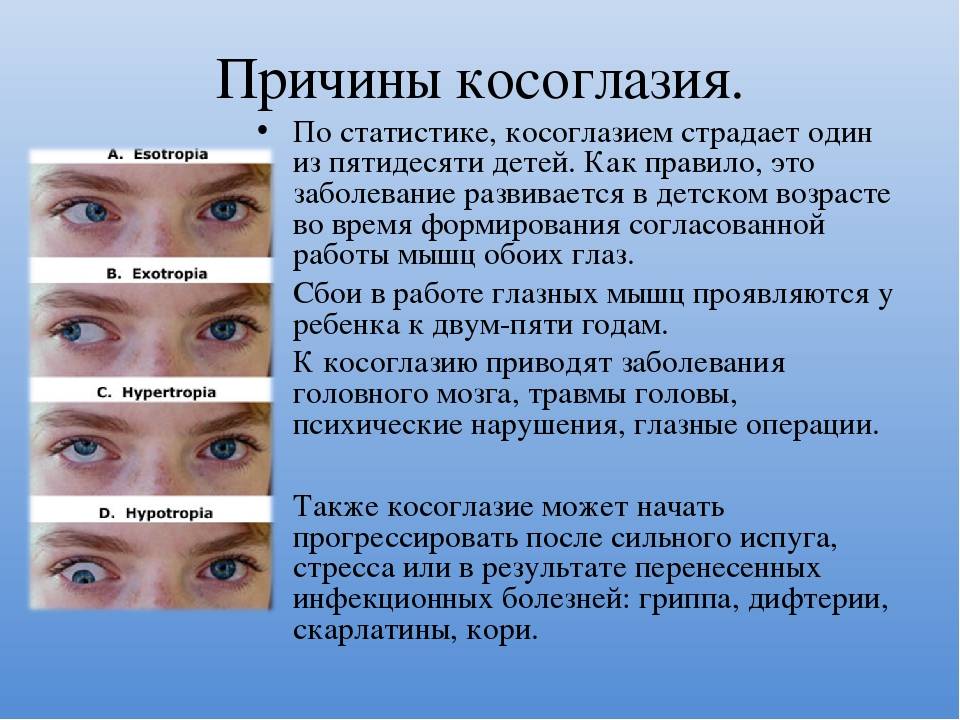 Sometimes eye doctors are on the fence about whether to start treatment, and it is only through repeat follow-up visits that they get a sense of whether or not a patient really has glaucoma or not. Thus it is very important for patients to maintain follow-up care, and typically for a low-risk glaucoma suspect this may require visits every 6 to 12 months. At each follow-up visit your eye doctor will check your vision, eye pressure, and examine the front and back of your eye, paying careful attention to the appearance of your optic nerves. There are also tests that are commonly performed to assess the structure and function of the optic nerve. To examine the structure of the optic nerve, your doctor will perform a careful examination in the office, obtain optic nerve imaging, and obtain a baseline set of optic nerve photographs. To examine the function of the optic nerve, an automated visual field test we be implemented with the help of a technician, who will instruct you on the correct way to perform the test.
Sometimes eye doctors are on the fence about whether to start treatment, and it is only through repeat follow-up visits that they get a sense of whether or not a patient really has glaucoma or not. Thus it is very important for patients to maintain follow-up care, and typically for a low-risk glaucoma suspect this may require visits every 6 to 12 months. At each follow-up visit your eye doctor will check your vision, eye pressure, and examine the front and back of your eye, paying careful attention to the appearance of your optic nerves. There are also tests that are commonly performed to assess the structure and function of the optic nerve. To examine the structure of the optic nerve, your doctor will perform a careful examination in the office, obtain optic nerve imaging, and obtain a baseline set of optic nerve photographs. To examine the function of the optic nerve, an automated visual field test we be implemented with the help of a technician, who will instruct you on the correct way to perform the test. All of these tests may be repeated at yearly intervals (or more or less frequently, as determined by your eye doctor) to assess if there are changes or “progression” over time. The follow-up visits are crucial to maintaining optimal eye health.
All of these tests may be repeated at yearly intervals (or more or less frequently, as determined by your eye doctor) to assess if there are changes or “progression” over time. The follow-up visits are crucial to maintaining optimal eye health.
Initial treatment options include either topical eye drops or laser treatment of the drainage angle to increase the amount of fluid draining from the eye, both of which can lower the eye pressure. The decision to treat is often not a cut and dry one; your ophthalmologist will assess all of your risk factors, your examination findings, and seek your input as to whether to treat or continue to observe your eyes over time. Some patients prefer to “watch and wait” or are worried about the side effects of treatment, while others may be more risk averse and would rather begin treatment and have peace of mind. There are some glaucoma risk calculators available but most eye doctors would agree that these may aid in diagnosis and assessment, but will not replace your doctor’s clinical judgment.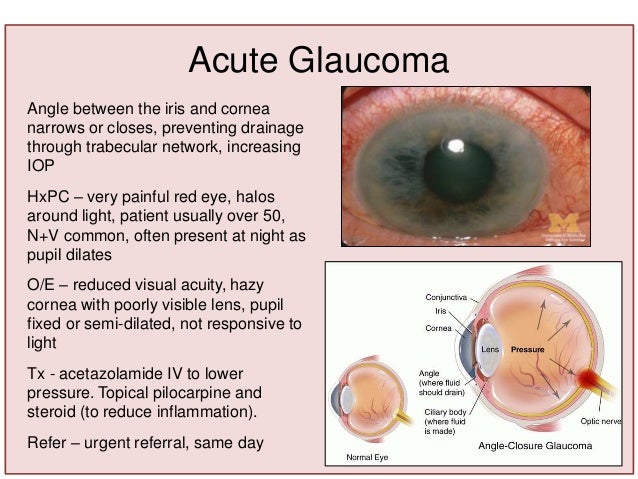
Questions to Ask Your Eye Doctor if You are a Glaucoma “Suspect”
The following are good questions to ask your eye doctor:
- Is my eye pressure elevated?
- Are there abnormalities to my optic nerve or field of vision?
- What are my risk factors for open-angle glaucoma?
As you build a relationship with your eye doctor and continue appropriate follow-up care as a glaucoma “suspect,” the decision concerning whether to begin treatment or not will become clearer. The good news is that if glaucoma treatment is required and begins early when there is little or no damage to the optic nerve, the risk of serious vision loss is quite small.
About the author
Yvonne Ou, MD
University of California, San Francisco, UCSF Medical Center
Yvonne Ou, MD, is a board certified ophthalmologist who specializes in glaucoma, including medical, laser and surgical therapies; cataract evaluation and treatment including combined cataract and glaucoma surgery; glaucoma filtering and implant surgery; and newer procedures.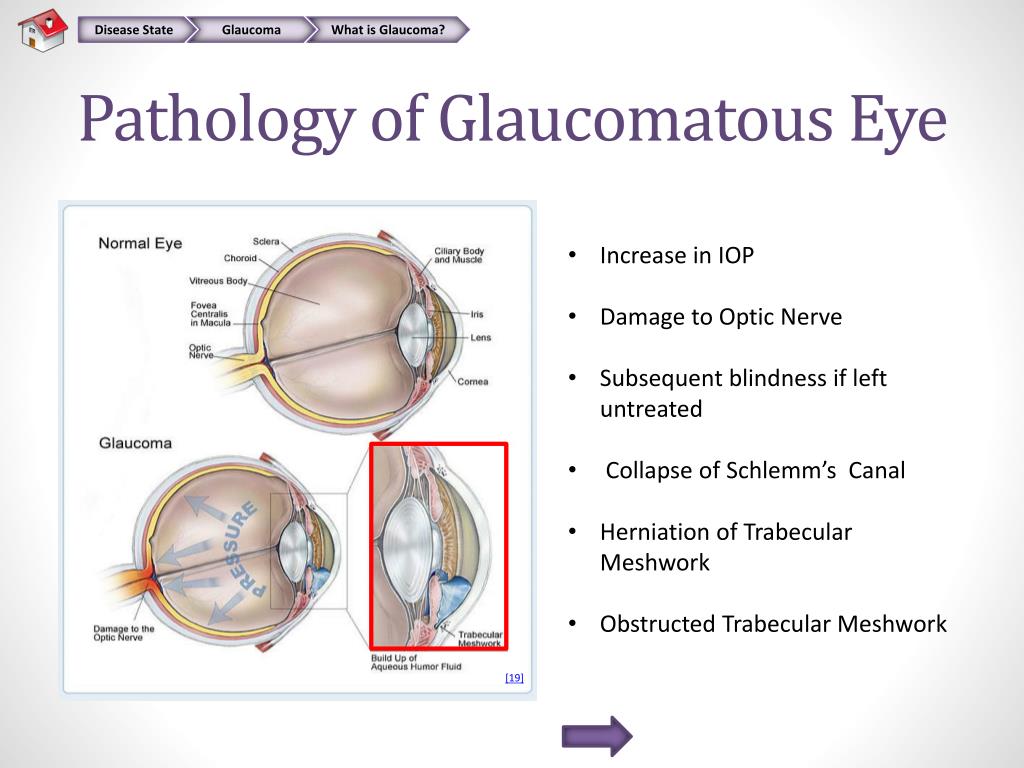
Full bio
Help find a cure
Donate to help end Glaucoma Disease
I would like to donate
$25
$50
$100
$250
$1000
Other
Donate Now
Stay in touch
Receive Glaucoma research updates and inspiring stories
Glaucoma suspects: A practical approach
1. Nayak BK, Maskati QB, Parikh R. The unique problem of glaucoma: Under-diagnosis and over-treatment. Indian J Ophthalmol. 2011;59(Suppl 1):S1–2. [PMC free article] [PubMed] [Google Scholar]
2. Topouzis F, Wilson MR, Harris A, Anastasopoulos E, Yu F, Mavroudis L, et al. Prevalence of open-angle glaucoma in Greece: The Thessaloniki eye study. Am J Ophthalmol. 2007;144:511–9. [PubMed] [Google Scholar]
3. Detorakis E, Symvoulakis E. Over-diagnosed glaucoma: Possible consequences for patients and health care services.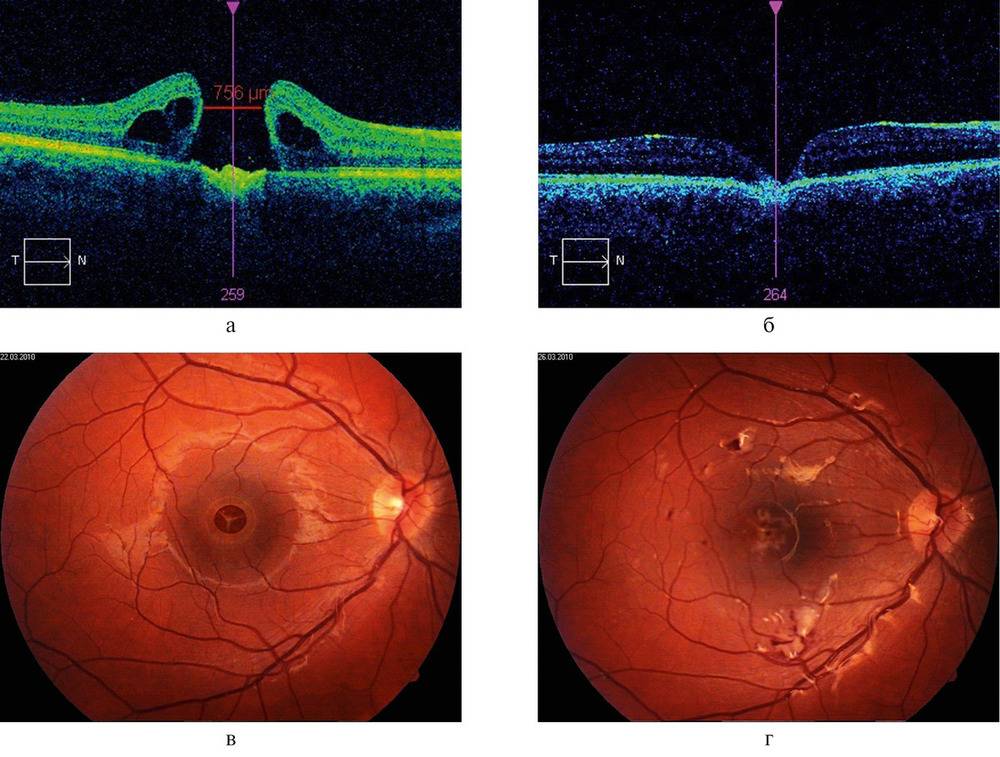 Hippokratia. 2011;15:381–2. [PMC free article] [PubMed] [Google Scholar]
Hippokratia. 2011;15:381–2. [PMC free article] [PubMed] [Google Scholar]
4. Hodapp E, Parrish RK, Anderson DR. 1st ed. US: St Louis Mosby; 1993. Clinical Decisions in Glaucoma. [Google Scholar]
5. American Academy of Ophthalmology. Primary Open Angle Glaucoma Suspect. Preferred Practice Pattern. American Academy of Ophthalmology. 2016 [PubMed] [Google Scholar]
6. Chang RT, Singh K. Glaucoma suspect: Diagnosis and management. Asia Pac J Ophthalmol (Phila) 2016;5:32–7. [PubMed] [Google Scholar]
7. Teng C, Gurses-Ozden R, Liebmann JM, Tello C, Ritch R. Effect of a tight necktie on intraocular pressure. Br J Ophthalmol. 2003;87:946–8. [PMC free article] [PubMed] [Google Scholar]
8. Chauhan BC, Garway-Heath DF, Goñi FJ, Rossetti L, Bengtsson B, Viswanathan AC, et al. Practical recommendations for measuring rates of visual field change in glaucoma. Br J Ophthalmol. 2008;92:569–73. [PMC free article] [PubMed] [Google Scholar]
9. Blumberg DM, De Moraes CG, Liebmann JM, Garg R, Chen C, Theventhiran A, et al. Technology and the glaucoma suspect. Invest Ophthalmol Vis Sci. 2016;57:OCT80–5. [PMC free article] [PubMed] [Google Scholar]
Technology and the glaucoma suspect. Invest Ophthalmol Vis Sci. 2016;57:OCT80–5. [PMC free article] [PubMed] [Google Scholar]
10. Hood DC, Kardon RH. A framework for comparing structural and functional measures of glaucomatous damage. Prog Retin Eye Res. 2007;26:688–710. [PMC free article] [PubMed] [Google Scholar]
11. Ahmad SS. An introduction to DARC technology. Saudi J Ophthalmol. 2017;31:38–41. [PMC free article] [PubMed] [Google Scholar]
12. Kass MA, Heuer DK, Higginbotham EJ, Johnson CA, Keltner JL, Miller JP, et al. The ocular hypertension treatment study: A randomized trial determines that topical ocular hypotensive medication delays or prevents the onset of primary open-angle glaucoma. Arch Ophthalmol. 2002;120:701–13. [PubMed] [Google Scholar]
13. Tielsch JM, Katz J, Sommer A, Quigley HA, Javitt JC. Family history and risk of primary open angle glaucoma. The Baltimore eye survey. Arch Ophthalmol. 1994;112:69–73. [PubMed] [Google Scholar]
14. Aung T, Khor CC. Glaucoma genetics: Recent advances and future directions. Asia Pac J Ophthalmol (Phila) 2016;5:256–9. [PubMed] [Google Scholar]
Glaucoma genetics: Recent advances and future directions. Asia Pac J Ophthalmol (Phila) 2016;5:256–9. [PubMed] [Google Scholar]
15. David R, Zangwill L, Badarna M, Yassur Y. Epidemiology of retinal vein occlusion and its association with glaucoma and increased intraocular pressure. Ophthalmologica. 1988;197:69–74. [PubMed] [Google Scholar]
16. Asia Pacific Glaucoma Guidelines. 3rd ed. The Netherlands: Kugler Publications; 2016. p. 18. [Google Scholar]
17. Mitchell P, Smith W, Attebo K, Healey PR. Prevalence of open-angle glaucoma in Australia. The blue mountains eye study. Ophthalmology. 1996;103:1661–9. [PubMed] [Google Scholar]
18. Leske MC, Connell AM, Wu SY, Hyman LG, Schachat AP. Risk factors for open-angle glaucoma. The Barbados eye study. Arch Ophthalmol. 1995;113:918–24. [PubMed] [Google Scholar]
19. Wong TY, Klein BE, Klein R, Knudtson M, Lee KE. Refractive errors, intraocular pressure, and glaucoma in a white population. Ophthalmology. 2003;110:211–7. [PubMed] [Google Scholar]
[PubMed] [Google Scholar]
20. Shen SY, Wong TY, Foster PJ, Loo JL, Rosman M, Loon SC, et al. The prevalence and types of glaucoma in Malay people: The Singapore Malay eye study. Invest Ophthalmol Vis Sci. 2008;49:3846–51. [PubMed] [Google Scholar]
21. Chen SJ, Lu P, Zhang WF, Lu JH. High myopia as a risk factor in primary open angle glaucoma. Int J Ophthalmol. 2012;5:750–3. [PMC free article] [PubMed] [Google Scholar]
22. Shen L, Melles RB, Metlapally R, Barcellos L, Schaefer C, Risch N, et al. The association of refractive error with glaucoma in a multiethnic population. Ophthalmology. 2016;123:92–101. [PMC free article] [PubMed] [Google Scholar]
23. Dandona L, Dandona R, Mandal P, Srinivas M, John RK, McCarty CA, et al. Angle-closure glaucoma in an urban population in Southern India. The Andhra Pradesh eye disease study. Ophthalmology. 2000;107:1710–6. [PubMed] [Google Scholar]
24. van Romunde SH, Thepass G, Lemij HG. Is hyperopia an important risk factor for PACG in the Dutch population. – A case control study? J Ophthalmol. 2013;2013:630481. [PMC free article] [PubMed] [Google Scholar]
– A case control study? J Ophthalmol. 2013;2013:630481. [PMC free article] [PubMed] [Google Scholar]
25. Nouri-Mahdavi K, Hoffman D, Coleman AL, Liu G, Li G, Gaasterland D, et al. Predictive factors for glaucomatous visual field progression in the advanced glaucoma intervention study. Ophthalmology. 2004;111:1627–35. [PubMed] [Google Scholar]
26. Miglior S, Pfeiffer N, Torri V, Zeyen T, Cunha-Vaz J, et al. European Glaucoma Prevention Study (EGPS) Group. Predictive factors for open-angle glaucoma among patients with ocular hypertension in the European Glaucoma Prevention study. Ophthalmology. 2007;114:3–9. [PubMed] [Google Scholar]
27. Herndon LW, Weizer JS, Stinnett SS. Central corneal thickness as a risk factor for advanced glaucoma damage. Arch Ophthalmol. 2004;122:17–21. [PubMed] [Google Scholar]
28. Kaushik S, Pandav SS. Measuring intraocular pressure: How important is the central corneal thickness. J Curr Glaucoma Pract. 2007;1:21–4. [Google Scholar]
29.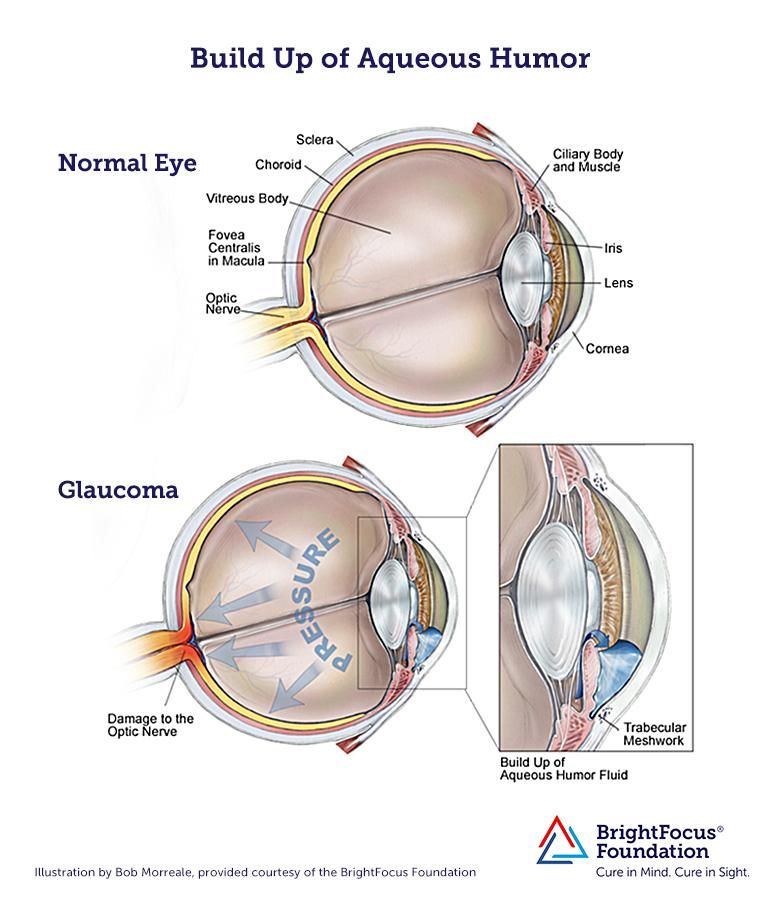 [Last accessed on 2017 Jul 27]. Available from: https://www.eyedocs.co.uk/ophthalmology-articles/glaucoma/769-iop-and-cornealthickness .
[Last accessed on 2017 Jul 27]. Available from: https://www.eyedocs.co.uk/ophthalmology-articles/glaucoma/769-iop-and-cornealthickness .
30. Weinreb RN, Brandt JD, Garway-Heath D, Medeiros FA. The Netherlands: Kugler Publications; 2007. Intraocular pressure. World Glaucoma Association Consensus Series-4. [Google Scholar]
31. Day AC, Machin D, Aung T, Gazzard G, Husain R, Chew PT, et al. Central corneal thickness and glaucoma in East Asian people. Invest Ophthalmol Vis Sci. 2011;52:8407–12. [PubMed] [Google Scholar]
32. Deol M, Taylor DA, Radcliffe NM. Corneal hysteresis and its relevance to glaucoma. Curr Opin Ophthalmol. 2015;26:96–102. [PMC free article] [PubMed] [Google Scholar]
33. Hayes DD, Teng CC, de Moraes CG, Tello C, Liebmann JM, Ritch R, et al. Corneal hysteresis and beta-zone parapapillary atrophy. Am J Ophthalmol. 2012;153:358–620. [PubMed] [Google Scholar]
34. Wells AP, Garway-Heath DF, Poostchi A, Wong T, Chan KC, Sachdev N, et al. Corneal hysteresis but not corneal thickness correlates with optic nerve surface compliance in glaucoma patients. Invest Ophthalmol Vis Sci. 2008;49:3262–8. [PubMed] [Google Scholar]
Invest Ophthalmol Vis Sci. 2008;49:3262–8. [PubMed] [Google Scholar]
35. Bhartiya S, Gadia R, Sethi HS, Panda A. Clinical evaluation of optic nerve head in glaucoma. J Curr Glau Prac. 2010;4:115–32. [Google Scholar]
36. Allingham RR, Damji KF, Freeman S. 6th ed. Philadelphia USA: Wolters Kluwer/Lippincott Williams and Wilkins; 2012. Shields’ Textbook of glaucoma. [Google Scholar]
37. Harizman N, Oliveira C, Chiang A, Tello C, Marmor M, Ritch R, et al. The ISNT rule and differentiation of normal from glaucomatous eyes. Arch Ophthalmol. 2006;124:1579–83. [PubMed] [Google Scholar]
38. Hwang YH, Kim YY. Application of the ISNT rule to neuroretinal rim thickness determined using cirrus HD optical coherence tomography. J Glaucoma. 2015;24:503–7. [PubMed] [Google Scholar]
39. American Academy of Ophthalmology. USA: American Academy of Ophthalmology; 2014. Clinical evaluation. Glaucoma: Basic and Clinical Science Course. Sec. 10; p. 50. [Google Scholar]
40.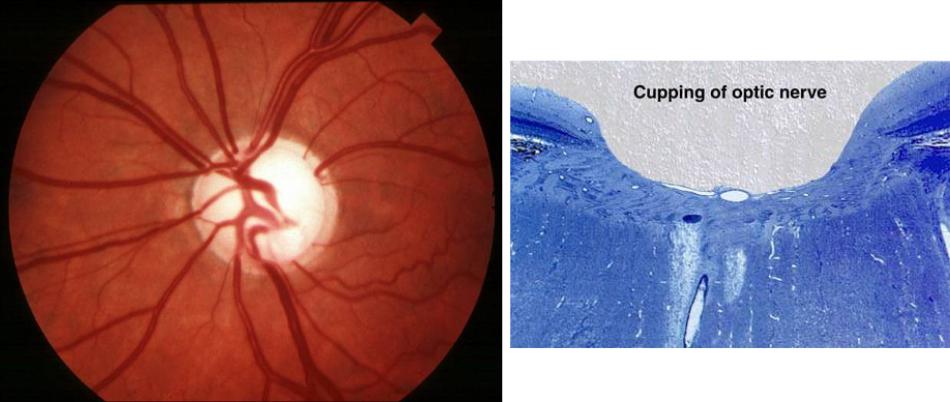 Ferreras A. Switzerland: Springer International Publishing; 2016. Glaucoma Imaging; pp. 158–64. [Google Scholar]
Ferreras A. Switzerland: Springer International Publishing; 2016. Glaucoma Imaging; pp. 158–64. [Google Scholar]
41. Blumenthal EZ, Weinreb RN. Assessment of the retinal nerve fiber layer in clinical trials of glaucoma neuroprotection. Surv Ophthalmol. 2001;45(Suppl 3):S305–12. [PubMed] [Google Scholar]
42. Soliman MA, van Den Berg TJ, Ismaeil AA, De Jong LA, De Smet MD. Retinal nerve fiber layer analysis: Relationship between optical coherence tomography and red-free photography. Am J Ophthalmol. 2002;133:187–95. [PubMed] [Google Scholar]
43. Vazquez LE, Huang LY. RNFL Analysis in the Diagnosis of Glaucoma. [Last accessed on 2017 Jul 27]. Available from: http://www.glaucomatoday.com/2016/06/rnfl-analysis-in-the-diagnosis-of-glaucoma/
44. Hood DC, Raza AS. On improving the use of OCT imaging for detecting glaucomatous damage. Br J Ophthalmol. 2014;98(Suppl 2):ii1–9. [PMC free article] [PubMed] [Google Scholar]
45. Sayed MS, Margolis M, Lee RK. Green disease in optical coherence tomography diagnosis of glaucoma. Curr Opin Ophthalmol. 2017;28:139–53. [PubMed] [Google Scholar]
Curr Opin Ophthalmol. 2017;28:139–53. [PubMed] [Google Scholar]
46. Medeiros FA, Zangwill LM, Bowd C, Vessani RM, Susanna R, Jr, Weinreb RN. Evaluation of retinal nerve fiber layer, optic nerve head, and macular thickness measurements for glaucoma detection using optical coherence tomography. Am J Ophthalmol. 2005;139:44–55. [PubMed] [Google Scholar]
47. Dong ZM, Wollstein G, Schuman JS. Clinical utility of optical coherence tomography in glaucoma. Invest Ophthalmol Vis Sci. 2016;57:OCT556–67. [PMC free article] [PubMed] [Google Scholar]
48. De Moraes CG, Hood DC, Thenappan A, Girkin CA, Medeiros FA, Weinreb RN, et al. 24-2 visual fields miss central defects shown on 10-2 tests in glaucoma suspects, ocular hypertensives, and early glaucoma. Ophthalmology. 2017;124:1449–56. [PMC free article] [PubMed] [Google Scholar]
49. Traynis I, De Moraes CG, Raza AS, Liebmann JM, Ritch R, Hood DC, et al. Prevalence and nature of early glaucomatous defects in the central 10° of the visual field. JAMA Ophthalmol. 2014;132:291–7. [PMC free article] [PubMed] [Google Scholar]
JAMA Ophthalmol. 2014;132:291–7. [PMC free article] [PubMed] [Google Scholar]
50. Hood DC, Raza AS, de Moraes CG, Odel JG, Greenstein VC, Liebmann JM, et al. Initial arcuate defects within the central 10 degrees in glaucoma. Invest Ophthalmol Vis Sci. 2011;52:940–6. [PMC free article] [PubMed] [Google Scholar]
51. Ahmad SS. Gonioscopy – A primer. US Ophthalmic Rev. 2017;10:42–5. [Google Scholar]
52. Coleman AL, Miglior S. Risk factors for glaucoma onset and progression. Surv Ophthalmol. 2008;53(Suppl 1):S3–10. [PubMed] [Google Scholar]
53. Chaitanya A, Pai VH, Mohapatra AK, Ve RS. Glaucoma and its association with obstructive sleep apnea: A narrative review. Oman J Ophthalmol. 2016;9:125–34. [PMC free article] [PubMed] [Google Scholar]
54. Kornmann HL, Giaconi JA. Treatment initiation in glaucoma suspects. US Ophthalmic Rev. 2014;7:45–9. [Google Scholar]
55. Galanopoulos A, Goldberg I. Clinical efficacy and neuroprotective effects of brimonidine in the management of glaucoma and ocular hypertension. Clin Ophthalmol. 2009;3:117–22. [PMC free article] [PubMed] [Google Scholar]
Clin Ophthalmol. 2009;3:117–22. [PMC free article] [PubMed] [Google Scholar]
56. Whittaker K, Shah P. Taylor RH, Shah P, Murray PI, Burdon A Ocular hypertension. 2nd ed. UK: BIOS Scientific Publishers; 2001. Key Topics in Ophthalmology; p. 200. [Google Scholar]
57. Jampel HD, Frick KD, Janz NK, Wren PA, Musch DC, Rimal R, et al. Depression and mood indicators in newly diagnosed glaucoma patients. Am J Ophthalmol. 2007;144:238–44. [PubMed] [Google Scholar]
Clinical case | Shevchenko M.V., Shugurova N.E., Lumpova T.N.
Summary
The article presents clinical examples of the prescription of combined antiglaucoma drugs and a discussion of their effectiveness in specific patients.
The article presents clinical examples of the prescription of combined antiglaucoma drugs and a discussion of their effectiveness in specific patients.
Key words: glaucoma, combined antiglaucoma drugs, intraocular pressure.
Abstract
Clinical examples of the effects of a modern hypotensive treatment
Shevchenko M.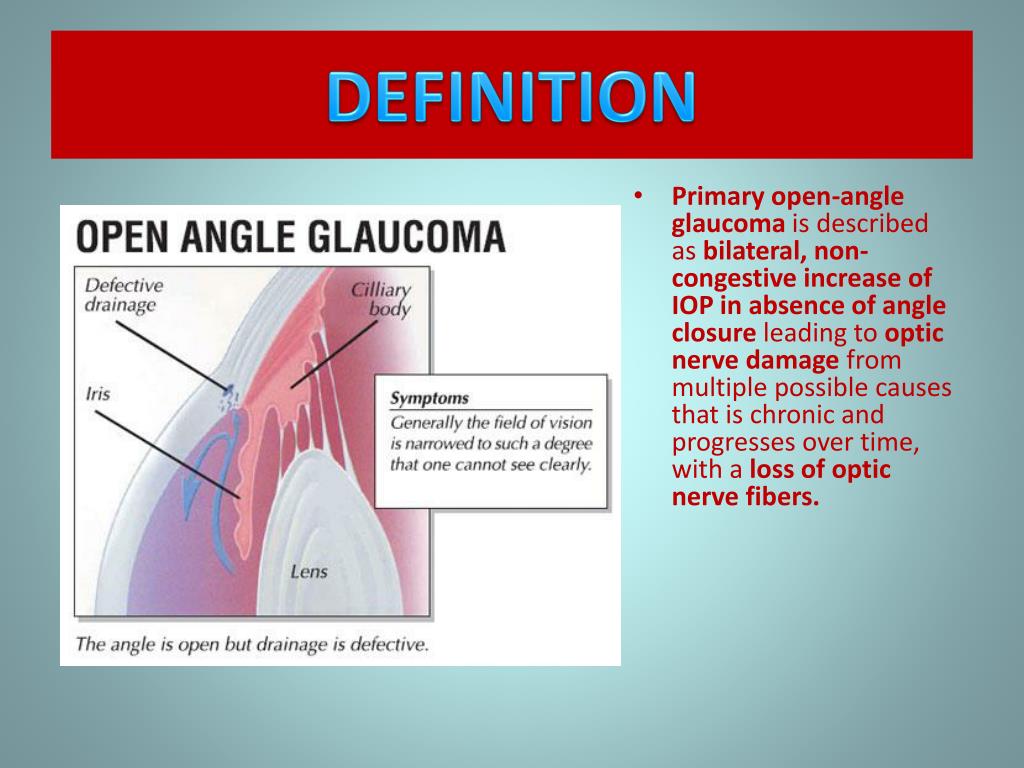 V., Shugurova N.E., Lumpova T.N.
V., Shugurova N.E., Lumpova T.N.
Samara State Medical University
Medical Center of specialty care «Your doctor»
Clinical examples of combined antiglaucomatous drugs prescription and the discussion of their efficiency in the particular patients are discussed.
Key words: glaucoma, combined antiglaucomatous drugs, intraocular pressure
Despite the fact that in recent years the views on the pathogenesis and clinic of glaucoma have been largely revised, the leading place in its treatment is still given to the elimination of increased intraocular pressure (IOP), which is regarded as the main risk factor for the development of glaucomatous optic neuropathy. Treatment of glaucoma begins, as a rule, with the appointment of local antihypertensive drugs, which are used short-term or long-term, sometimes throughout the patient’s life [1, 3, 4, 6]. The systematic use of drugs that reduce IOP is also used after laser interventions or hypotensive operations. Thus, according to a number of authors [3, 5], 5–15 years after various types of antiglaucoma operations, 15–64% of patients require the use of antihypertensive drugs. Thus, the role of local antihypertensive therapy in the treatment of glaucoma does not decrease [2, 6].
Thus, the role of local antihypertensive therapy in the treatment of glaucoma does not decrease [2, 6].
In recent years, the arsenal of local antihypertensive drugs for the treatment of glaucoma has been constantly replenished. Two years have passed since the appearance of antihypertensive drugs from Allergan – Ganfort, Alfagan R and Kombigan in the Samara region. With the advent of these drugs on the market, the possibilities of drug treatment of glaucoma have significantly expanded, since each of the drugs has no analogues [7–10]. The accumulated experience allows illustrating certain theses characterizing the use of these tools in practical work, with clinical examples.
It should be noted the fundamental differences between the contingent of patients who usually take part in drug evaluation studies in accordance with the inclusion and exclusion criteria, and the unselected contingent of patients in real clinical practice who are registered with an ophthalmologist: patients with advanced stages of the glaucoma process, operated on for glaucoma, with complex combined ophthalmic pathology, with refractory forms of glaucoma.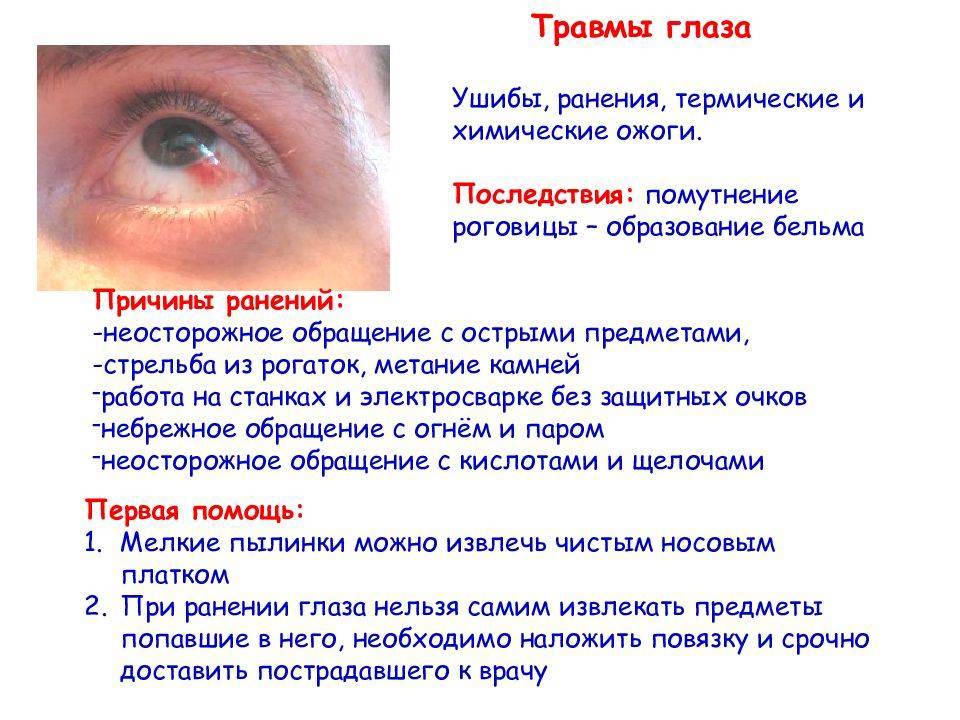 An analysis of clinical examples from everyday medical practice seems interesting and significant to us, since it is the practical application that determines the place of a particular antihypertensive drug in the treatment of glaucoma.
An analysis of clinical examples from everyday medical practice seems interesting and significant to us, since it is the practical application that determines the place of a particular antihypertensive drug in the treatment of glaucoma.
Clinical example 1. Switching to Gunforth from another free combination of drugs gives an additional reduction in IOP.
Patient K., 65 years old. Diagnosis: open-angle IIa glaucoma, initial cataract OD. Total operated retinal detachment, pseudophakia OS. High complicated myopia, PES of both eyes.
Vis OD: 0.02 M13.0D = 0.6. Vis OS: incorrect light projection.
Blindness of the left eye since 2009 due to twice operated retinal detachment. At the same time, laser coagulation of the retina of the right eye was performed for prophylactic purposes.
The diagnosis of glaucoma of the right eye was made for the first time in June 2013
Initial IOP OD (Po) was 27 mm Hg. Art.; OS – 9.0 mm Hg. Art.
CTR: OD – 545 µm; OS – 544 microns.
The stage of glaucoma OD was established based on the results of kinetic and static perimetry.
Taking into account risk factors (stage II of the process, high myopia) blood pressure (BP)) target pressure was determined at the level of 14.4 mm Hg. Art.
When controlling IOP OD after 2 weeks. after the appointment of timolol 2 p./day, IOP dropped to 20 mm Hg. Art. (according to Maklakov – 22 mm Hg).
Latanoprost was added to the treatment in OD.
At the level of IOP OD (Po) 18 mm Hg. Art. the combination of timolol and latanoprost was changed to Ganfort 1 rub/day in the morning. IOP control after 1 week. showed a decrease in IOP to 15 mm Hg. Art.
During dynamic observation, the average IOP for 5 measurements within 1 year was 14.7 mm Hg. Art., i.e., there was a decrease in IOP by 5.3 mm Hg. Art. compared with timolol and 2.3 mm Hg. Art. compared with the combination of timolol + latanoprost. There was no negative dynamics of the state of the visual field.
Clinical example 2. Alphagan R is an effective therapy in the initial stage of glaucoma.
Patient M., 70 years old.
Diagnosis: open-angle Ia glaucoma, mild myopia, myopic astigmatism in both eyes.
Vis OD: 0.2 M 2.5 D Cyl – 1.5 D ax 95 = 0.9. Vis OS: 0.2 M 2.5 D Cyl – 0.5 D ax 90 = 0.8. CTR OU – 596 µm.
Initial IOP OD (Po) – 24 mm Hg. Art., OS – 25 mm Hg. Art.
When determining the target true IOP, taking into account age and diastolic blood pressure in the brachial artery (the patient has hypotension), it was 12.9mmHg Art.
Concomitant diseases: cardiovascular pathology, pulse 55 beats/min, which ruled out the use of beta-blockers.
Given the low initial level of IOP and comorbidities, monotherapy with carbonic anhydrase inhibitors (Azopt) was prescribed – IOP decreased to 18–19 mm Hg. Art., but there was a side effect of carbonic anhydrase inhibitors – a feeling of bitterness in the mouth.
Monotherapy with betaxolol was effective in its hypotensive effect (IOP – 14 mm Hg), but led to a further decrease in blood pressure to 90/60 mmHg Art. , decrease in heart rate up to 50 beats / min.
, decrease in heart rate up to 50 beats / min.
The patient was prescribed Alfagan R 3 times a day. Against this background, OS IOP was 12.5 mm Hg. Art. The drug was well tolerated subjectively, the patient refused the tear substitutes that she used earlier.
This clinical example illustrates the effectiveness of Alfagan R in the initial stage of glaucoma, as well as the difficulty of choosing an antihypertensive drug for monotherapy in some cases due to their local and general side effects.
Clinical example 3. Alphagan R as adjunctive therapy.
Patient T., 61 years old.
Diagnosis: OD – suspected glaucoma, OS – open-angle IIc glaucoma, OU – PES, initial cataract.
Vis OD: 1.0. Vis OS: 0.1 does not correct.
At the time of treatment, IOP OD (Po) – 19.0; OS – 24.3 mm Hg. Art.
CTR: OD – 578 µm, OS – 586 µm.
The target pressure, taking into account diastolic blood pressure (80 mm Hg) and age, was 13.9 mm Hg. Art.
Previous experience of antihypertensive therapy in this patient indicated that he did not tolerate non-selective beta-blockers (they caused depression, heart rhythm disturbances), carbonic anhydrase inhibitors (he noted pain and other discomfort in the eyes).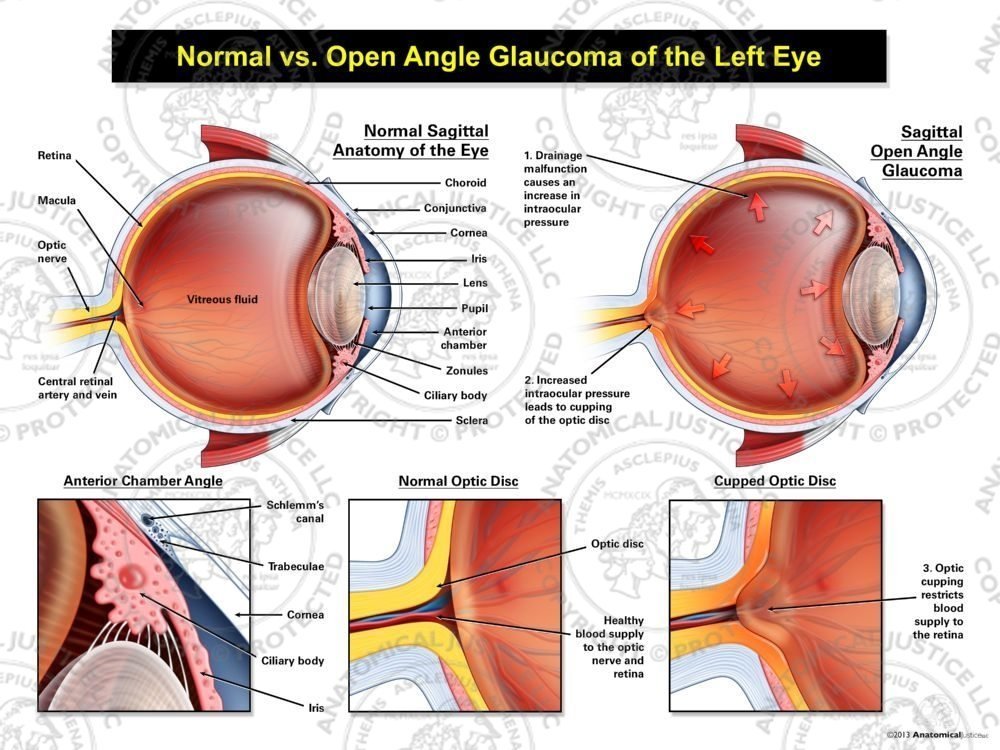
Against the background of latanoprost, Po of the left eye decreased to 20 mm Hg. Art.
The only possible addition was brimonidine. In addition to Xalatan, the patient began to instill Alfagan R 3 rubles/day. After 1 month Po OS was 14 mm Hg. Art. The effectiveness of this combination of antihypertensive drugs is due to a double effect on uveoscleral outflow, a decrease in the production of intraocular fluid due to brimonidine, and an increase in the effect of latanoprost over time. A slight drowsiness, which the patient noted during the first time of using Alfagan R, was transient.
Thus, the combination of brimonidine with prostaglandin analogues in this patient increased the hypotensive effect of Xalatan by 5 mm Hg. Art.
Clinical example 4. Neuroprotective effect of Alfagan R.
Patient M., 41 years old.
The woman first came with complaints of a feeling of heaviness in both eyes. Since December 2010, he has been observed with a diagnosis of open-angle IIa glaucoma in both eyes.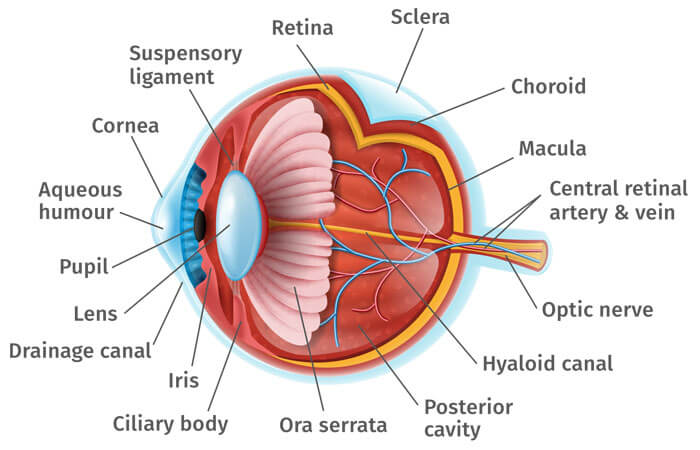 Heredity is not burdened.
Heredity is not burdened.
Glaucoma was detected in December 2010 at a Po OU level of 27 mm Hg. Art. Symptoms from the optic disc prevailed, especially in OS. The perimetric index MD was in both eyes at the upper limit of normal.
Vis OU: 0.6 M 0.75 D = 1.0. CTR: OD – 555 µm; OS – 560 µm.
Latanoprost was prescribed, which for 1 year kept IOP at the level of compensation – 14-16 mm Hg. Art.
With the advent of the new drug Alfagan R, taking into account the young age of the patient and the neuroprotective properties of brimonidine, the attending physician replaced Xalatan with Alfagan R. After 2 months. IOP OU rose to 24–28 mm Hg. Art., which is natural. Considering the lack of IOP compensation during monotherapy with Alfagan R, in April 2012, Xalatan was prescribed again, but the repeated administration of the drug, as often happens, did not lead to the achievement of the target pressure. The doctor again added Alfagan R. In April 2013, given the IOP level of 20 mm Hg. Art. in OU, Xalatan was changed to Gunforth 1 rub/day. After 10 days, IOP OU was 12–13 mm Hg. Art. against the background of the regimen of instillation of drops Ganfort + Alfagan R 3 rubles / day. When switching from Xalatan to Gunforth, this patient had a decrease in IOP of 7 mm Hg. Art. from the original.
Art. in OU, Xalatan was changed to Gunforth 1 rub/day. After 10 days, IOP OU was 12–13 mm Hg. Art. against the background of the regimen of instillation of drops Ganfort + Alfagan R 3 rubles / day. When switching from Xalatan to Gunforth, this patient had a decrease in IOP of 7 mm Hg. Art. from the original.
Thus, in total, the patient received Alfagan in combination or monotherapy for 1.5 years, almost from the beginning of the drug’s appearance on the Russian market.
Table 1 shows the dynamics of perimetric indices for the specified time.
Despite the borderline values of the MD index initially in both eyes, the photosensitivity of the retina increased over time. The PSD index also had no negative dynamics.
HRT of the optic disc over time showed some positive changes in morphometric characteristics.
In this clinical example, the positive dynamics of the photosensitivity of the retina and the morphometric characteristics of the optic disc during the use of brimonidine for 1.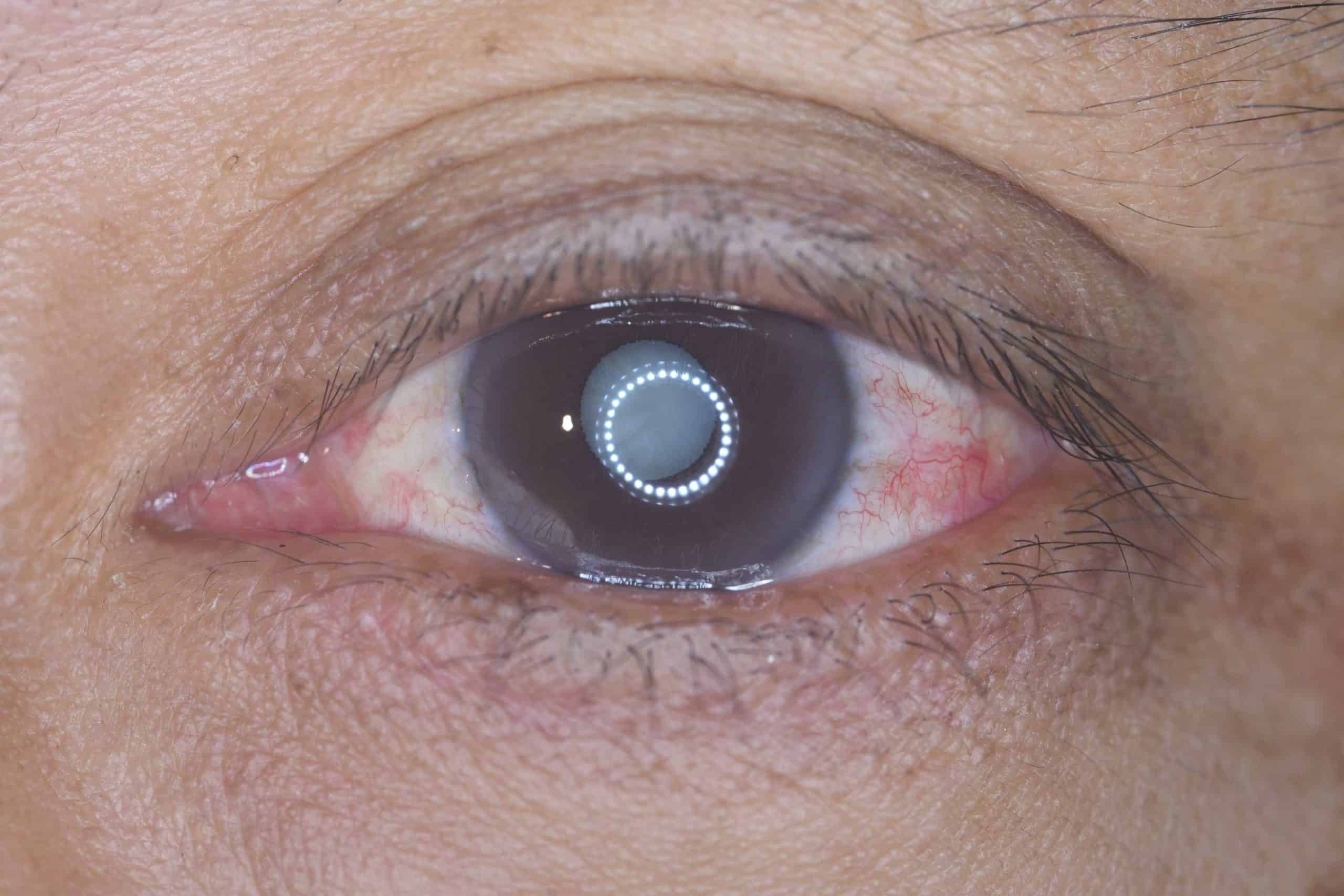 5 years suggests that the positive dynamics is related to the neuroprotective effect of brimonidine. The observation will continue.
5 years suggests that the positive dynamics is related to the neuroprotective effect of brimonidine. The observation will continue.
Clinical case 5. Combination Ganforth + Alfagan R – an alternative to surgical treatment of glaucoma
Patient E., 66 years old, has been observed since 2005 with a diagnosis of operated open-angle IIa glaucoma, pseudophakia, moderate myopia in both eyes. The father was blind from glaucoma.
Vis OD: 0.6 does not correct. Vis OS: 0.6 M 1.0 D = 1.0.
Both eyes have been repeatedly operated on. Consistently, in accordance with the principle of minimal trauma, the entire arsenal of glaucoma surgery was applied: non-penetrating surgery, repeated needling of the filtration zone with the introduction of antimetabolites, trabeculectomy. Recent operations in 2009 and 2010 – deep sclerectomy of both eyes with implantation of collagen drains, after which IOP was kept at the level of compensation for 4 years. It should be noted that each intervention in this patient was difficult.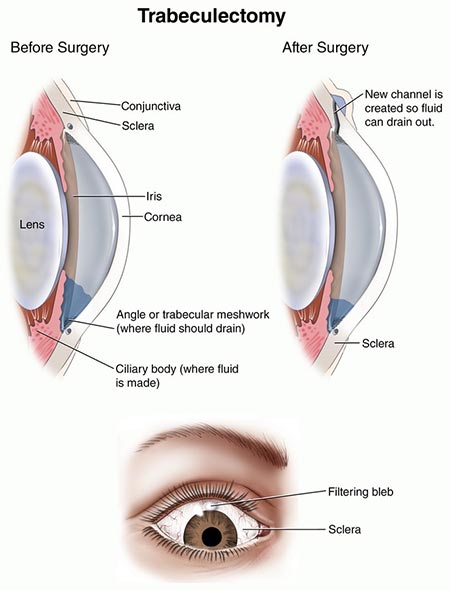 After NST, there was a detachment of the choroid, needling was accompanied by toxic keratopathy, filtering operations were complicated by the development of bilateral cataracts. However, after cataract surgery, despite all the difficulties, it was possible to maintain high vision and stage II of the process. Therefore, when in June 2012 there was a tendency to increase IOP in the left, better eye, another operation seemed highly undesirable.
After NST, there was a detachment of the choroid, needling was accompanied by toxic keratopathy, filtering operations were complicated by the development of bilateral cataracts. However, after cataract surgery, despite all the difficulties, it was possible to maintain high vision and stage II of the process. Therefore, when in June 2012 there was a tendency to increase IOP in the left, better eye, another operation seemed highly undesirable.
Timolol maleate, Azopt and Xalatan were prescribed, against which the Pro of the left eye remained at the level of 30 mm Hg. Art. Xalatan and 1 instillation of timolol were replaced with Ganfort and Alfagan R was added 3 rubles/day. On the regime of Ganfort in the morning, timolol in the evening, Alfagan R 3 rubles / day and Azopt 2 rubles. IOP OS decreased after 3 weeks. up to 14.5 mm Hg Art.
In this case, drug therapy using a combination of Ganfort + Alfagan R served as a justified alternative to surgical treatment.
Clinical example 6.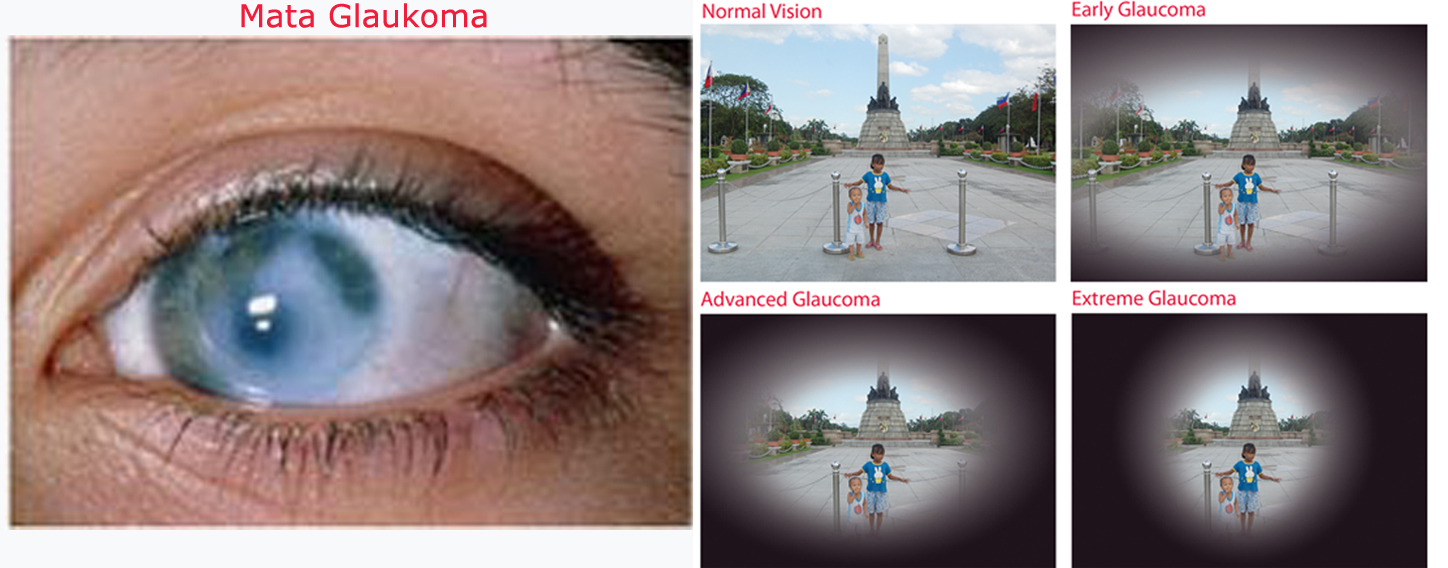 Combigan as part of maximum drug therapy in a patient with normal pressure glaucoma.
Combigan as part of maximum drug therapy in a patient with normal pressure glaucoma.
Patient G., 65 years old.
Diagnosis: open-angle IIa low-pressure glaucoma, phacosclerosis, high myopia OU.
Vis OD: 0.02 M 9.0 D = 0.5. Vis OS: 0.02 M 10.0 D = 0.6. CTR: OD – 515 µm; OS – 504 microns. The patient has a thin cornea, an approximate correction for corneal thickness is (+) 3 mmHg. Art. UZB: OU – 26.5 mm. IOP (Rho): OD – 19mmHg Art., OS – 20 mm Hg. Art.
The detection of glaucoma in this patient was dominated by symptoms from the ONH – according to the OST, a decrease in the average thickness of the retinal nerve fiber layer to 74 microns.
The risk factors determining target pressure in this patient were arterial hypotension (120/80 mmHg), high myopia, heredity (mother and sister became blind due to glaucoma), thin cornea.
Target pressure was 13.8 mm Hg. Art.
The regimen of hypotensive drops was introduced by Betoptic and Travatan, which reduced Po to 15–16 mm Hg.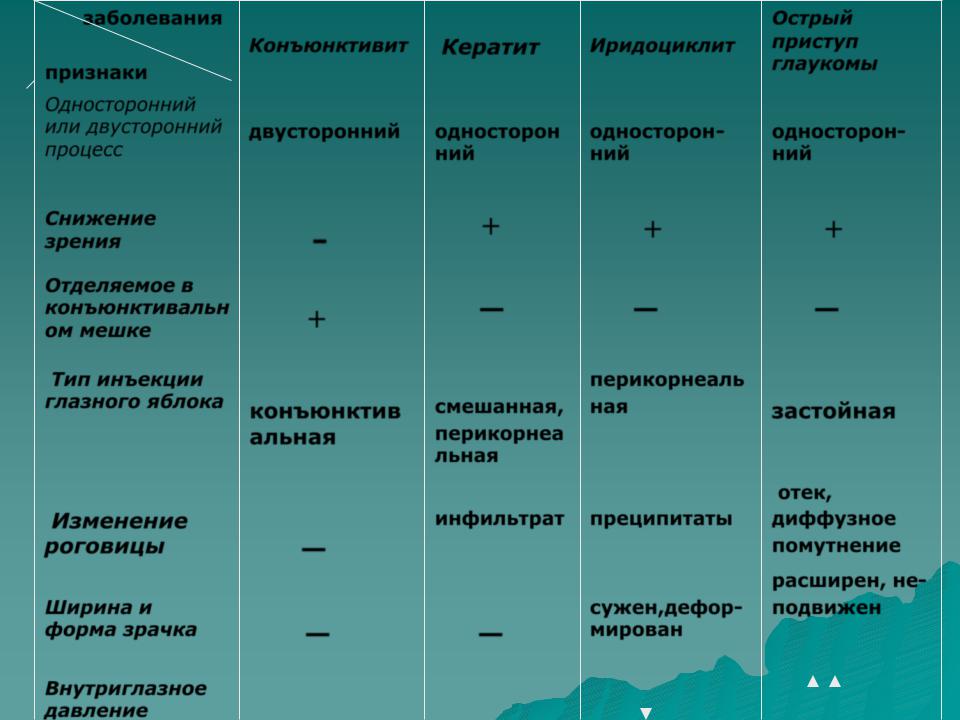 Art., (according to Maklakov – 19-22 mmHg Art.), the target pressure was not reached. Since April 2013, in addition to Travatan, Kombigan has been recommended instead of Betoptik 2 rubles / day. After 3 weeks Po corneal-compensated decreased in OU to 13.5 and 14.0 mm Hg. Art., which corresponded to the pressure of the target.
Art., (according to Maklakov – 19-22 mmHg Art.), the target pressure was not reached. Since April 2013, in addition to Travatan, Kombigan has been recommended instead of Betoptik 2 rubles / day. After 3 weeks Po corneal-compensated decreased in OU to 13.5 and 14.0 mm Hg. Art., which corresponded to the pressure of the target.
As a result, Combigan, as an additional drug to a prostaglandin analogue, made it possible to achieve low target pressure in a patient with normotensive glaucoma.
Clinical example 7. Combigan – a drug for maximum drug therapy in complex concomitant pathology.
Glaucoma is often combined with other complex eye pathologies, and patients requiring maximum medical therapy are most often patients for whom surgical intervention for glaucoma is highly undesirable due to concomitant general somatic pathology or a particularly difficult ophthalmic situation.
Patient G., 71 years old, suffers from severe diabetes mellitus in addition to glaucoma.
Diagnosis: proliferative diabetic retinopathy, pseudophakia OU, traction retinal detachment OD; open-angle IIIc glaucoma OS.
Vis OD: 0.02 does not correct. Vis OS: 0.1 does not correct.
The initial IOP of almost the only left eye was 35 mm Hg. Art. The problem of adequate control of IOP was complicated by a thin cornea (468 µm).
The right eye was blind due to proliferative diabetic retinopathy. In the left eye, in addition to stage III open-angle glaucoma with high IOP, pseudophakia, there was diabetic macular edema. Obviously, surgery for glaucoma in a single seeing eye with a visual acuity of 0.1 and macular edema is highly undesirable.
The dynamics of IOP OS on different regimens of antihypertensive drugs was presented as follows:
• Travatan – 1 rub./day – Po OS 30 mm Hg. Art.;
• Combigan – 2 r./day + Travatan 1 r./day – Po OS 23 mm Hg. Art.;
• Kombigan – 2 rubles/day, Travatan – 1 rub/day, Azopt 2 rubles/day – Po OS 16 mm Hg. Art.
In this case, the maximum drug therapy using Combigan allowed us to avoid surgery in the only seeing eye with PDRP and macular edema.
Since the treatment of glaucoma is a long, as a rule, lifelong process, the choice of a drug for a particular patient, which allows achieving stable normalization of ophthalmotonus and creating conditions for long-term preservation of visual functions, is a responsible and often difficult task for an ophthalmologist. Our ability to solve this problem has increased significantly.
Literature
1. Glaucoma. National leadership / ed. E.A. Egorova. M.: GEOTAR-Media, 2013. 824 p.
2. Egorov E.A., Astakhov Yu.S., Stavitskaya T.V. Ophthalmopharmacology. M.: GEOTAR-Media, 2005. 464 p.
3. Erichev V.P. Modern principles of antihypertensive therapy of glaucoma / Conf. “Glaucoma: reality and prospects”: Sat. scientific articles. M., 2008. S. 220–223.
4. Nesterov A.P. Glaucoma. M.: Medicine, 1995.
5. Nesterov A. P. New trends in the conservative treatment of glaucoma. Bulletin of Ophthalmology. 1995. No. 4. S. 3–5.
P. New trends in the conservative treatment of glaucoma. Bulletin of Ophthalmology. 1995. No. 4. S. 3–5.
6. Terminology and guidelines for glaucoma // European Glaucoma Society. 3th ed. // Savona: Dogma, 2008. 184 p.
7 Aptel et al. // EUR. J. Ophthalmol. 2012. Vol. 22. R. 5–18.
8. Bournias T.E., Lai J. // Ophthalmology. 2009 Vol. 116(9). R. 1719–1724.
9. Centofanti M., Oddone F., Gandolfi S., Hommer A. et al. // Am J Ophthalmol. 2010 Vol. 150. R. 575-580.
10. Zimmerman T.J., Kooner K.S., Sharir M., Fechtner R.D. Textbook of ocular pharmacology. 1997.
Glaucoma – what is it, symptoms, causes, types, diagnosis, treatment and prevention
Strictly speaking, glaucoma is not one disease, but a whole group of diseases with similar symptoms. They are characterized by:
- increased intraocular pressure – it can be both permanent and episodic;
- lesion and subsequent atrophy of the optic nerve;
- decreased visual acuity, impaired visual function.

Sign up for a free vision test
According to statistics, in 2019more than 70 million people suffered from this disease. In Russia, the number of cases is estimated at about a million. Glaucoma is the second most common cause of blindness, second only to cataracts. It is very important to be regularly examined by a specialist!
The purpose of this article is to provide an overview of glaucoma, its causes, symptoms, treatment, and prevention.
Contents
- Types of glaucoma
- Causes of glaucoma
- Disease stages
- Symptoms of glaucoma
- Prophylaxis
- Treatment of glaucoma
Glaucoma types
The space of the eye filled with a clear liquid and bounded on one side by the cornea and on the other by the iris is called the anterior chamber. It has an area called the anterior chamber angle or APC. In the outer wall of the APC is the drainage system of the eye, which provides a controlled outflow of intraocular fluid. Fluid circulation maintains intraocular pressure (IOP) at a constant level, and a violation of its function leads to an increase in pressure.
Fluid circulation maintains intraocular pressure (IOP) at a constant level, and a violation of its function leads to an increase in pressure.
Accordingly, there are two main types of glaucoma:
- closed angle;
- open angle.
The first variety, that is, angle-closure glaucoma, is less common; according to various estimates, from 10 to 20% of the total number of patients suffer from it. Most often, it is faced by people over the age of 30, who also have farsightedness.
The specificity of this species is that the iris overlaps the anterior chamber angle (ACC) of the eye. For this reason, the work of the natural drainage system is disrupted, and pressure builds up in the visual organ. This may be accompanied by:
- sharp headache;
- redness of the eye;
- blurred vision and its other disorders, including complete blindness.
Open-angle glaucoma is found in approximately 80-90% of those who experience an increase in IOP. In this case, access to the natural drainage system remains open, but it does not work properly. As a result, the pressure inside the eye gradually increases. Such a disease can be asymptomatic, which is especially dangerous, since a person can suddenly, without any clear reason, feel that the quality of his vision has noticeably decreased.
In this case, access to the natural drainage system remains open, but it does not work properly. As a result, the pressure inside the eye gradually increases. Such a disease can be asymptomatic, which is especially dangerous, since a person can suddenly, without any clear reason, feel that the quality of his vision has noticeably decreased.
Causes of glaucoma
The balance of inflow and outflow of intraocular fluid maintains pressure inside a healthy eye at a level between about 10 and 20 mm Hg. Art. If the normal circulation of the liquid is disturbed, the pressure begins to rise. There are problems with blood circulation in the structures of the eye, the fibers of the optic nerve die off, the field of view gradually narrows, and then the optic nerve can atrophy, and then complete blindness occurs.
Currently, experts cannot unequivocally say for what reasons glaucoma occurs. The occurrence of this disease is influenced by factors such as:
- heredity;
- individual anatomical features, the specificity of the structure of the visual organs in a particular person;
- various pathologies of the cardiovascular, nervous and endocrine systems.

Risk factors for the development of glaucoma include a small volume of the anterior chamber of the eye. This feature of the structure of the organ of vision is present in some nationalities – the Eskimos and the inhabitants of East Asia. In women, this anatomical feature is more common than in men, so for them the risk of getting glaucoma is slightly higher.
The presence of age and genetic risk factors is the reason why many people should be screened at least once a year for suspected glaucoma. This primarily applies to those who:
- over 40 years old – with age, the likelihood of the disease increases;
- suffers from other eye diseases, such as cataracts, tumors, acute inflammation;
- has diseases of the cardiovascular, endocrine and nervous systems;
- is taking or has taken hormonal drugs for a long time;
- has relatives who have been diagnosed with glaucoma.
Stages of glaucoma
The disease in its development goes through several stages. The transition to a more serious stage is usually expressed in the appearance of visual field defects. The field of view is the space that a person sees around him, when looking fixed at a certain point.
The transition to a more serious stage is usually expressed in the appearance of visual field defects. The field of view is the space that a person sees around him, when looking fixed at a certain point.
At the initial stage of the disease, loss of small central areas of the visual field most often occurs. The patient may either not notice it at all, or pay attention to small dark spots before the eyes.
Further, peripheral vision gradually deteriorates. A person with glaucoma sees more or less well only what is directly in front of him. But over time, the central field of vision narrows – experts often use the term “tunnel vision” because it seems to a person that he is looking at the world through a long narrow tube. A veil appears before the eyes, it may seem that dark dots are running in front of them.
At the last stage of glaucoma, which is called terminal, there is a complete loss of vision.
Symptoms of glaucoma
Obviously, the earlier ophthalmologists make an appropriate diagnosis, the more likely it is that the problem can be influenced. However, the signs of glaucoma, as mentioned above, often do not appear. Therefore, a person can find out about the presence of serious complications, for example, by visiting a specialist for a completely different reason.
However, the signs of glaucoma, as mentioned above, often do not appear. Therefore, a person can find out about the presence of serious complications, for example, by visiting a specialist for a completely different reason.
Glaucoma is often discovered incidentally during a scheduled visit to an ophthalmologist.
However, there are a number of symptoms that clearly indicate that it is necessary to see a doctor . This:
- blurred vision;
- the occurrence of a sharp headache, including only one half of the head;
- eye pain;
- the appearance of iridescent halos around light sources;
- redness of the eye;
- blurred vision in low light, primarily in the evening and at night;
- loss of peripheral vision.
Prevention of glaucoma is especially important for people over the age of 45. They should follow the simple recommendations of doctors – this reduces the likelihood of the development and progression of the disease:
Damage to the optic nerve and, moreover, loss of vision in glaucoma are irreversible.


